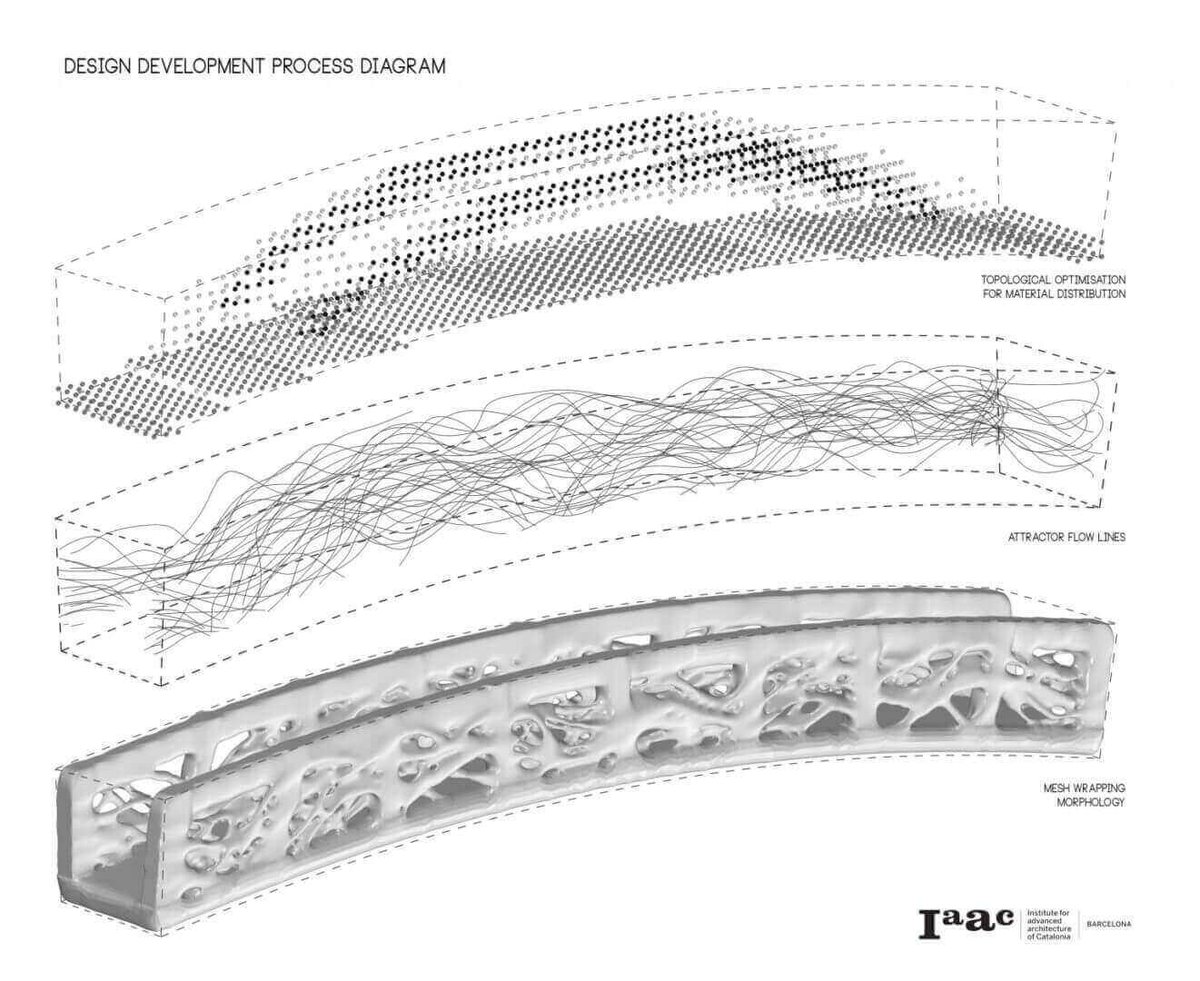New pedestrian bridge designed by the Institute of Advanced Architecture of Catalonia (IAAC) is 3D printed with micro-reinforced concrete.
Back in 2015, Dutch 3D printing company MX3D aimed to make history by constructing the world’s first fully functional 3D printed bridge. While their robot arms are still hard at work building it over a canal in Amsterdam, the Institute of Advanced Architecture of Catalonia (IAAC) have overtaken them with a functional 3D printed bridge of their own.
Last week, the world’s first 3D printed pedestrian bridge was inaugurated at the Castilla-La Mancha urban park in Alcobendas, Madrid. After the architectural institute completed the design, the bridge was constructed by the infrastructure and renewable energy corporation ACCIONA. The project was completed with assistance from frequent ACCIONA collaborator Enrico Dini, the inventor of D-Shape, a large-scale binder jetting technology that has been used to 3D print houses.
The footbridge was 3D printed with micro-reinforced concrete material, measuring a total of 12 meters in length and 1.75 meters in width. According to the IAAC, this project is the accumulation of 15 years of research on large-scale 3D printing in the architectural sector.
A Pedestrian Bridge to the Future
The IAAC used parametric design techniques to create the functional footbridge, invoking the complexity and unpredictability of nature. These generative algorithms also helped to optimize material distribution, and allowed the multidisciplinary team to recycle the micro-reinforced concrete during construction, minimizing the amount of waste left over from the printing process.
The use of computational design also ensured that material would only be used where it was needed, maximizing the structural performance of the footbridge. The mesmerizing generative design also highlights the advantages that 3D printing technology has over traditional construction techniques, including time-efficiency, reduced cost, and increased design flexibility.
While this 3D printed footbridge in Madrid might not match the grandiose size or aesthetic that MX3D is aiming for in Amsterdam, the IAAC project is nonetheless a major milestone for 3D printing in the construction sector. By overcoming the limitations imposed by traditional construction techniques, the new pedestrian bridge in Madrid proves that 3D printing technology will be an advantageous tool for various construction projects in the near future.
Source: IAAC

License: The text of "World’s First 3D Printed Pedestrian Bridge Completed in Madrid" by All3DP is licensed under a Creative Commons Attribution 4.0 International License.